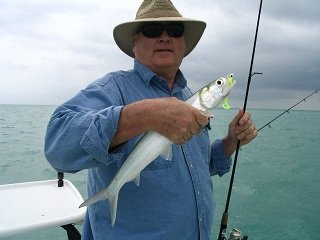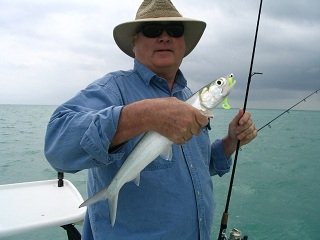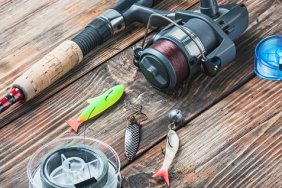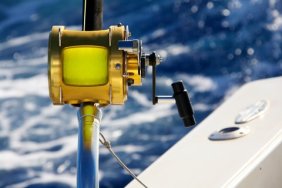 While inshore fishing can provide some of the most exciting memories you’ll ever have on the water, sometimes we anglers want to take some time to leisurely fish with our families or even by ourselves. Freshwater fishermen normally accomplish this by angling panfish, and inshore anglers can target smaller species as well. There are a few abundant species that work well, but ladyfish are great for light tackle fishing while still providing an exciting experience for anyone who targets them.
While inshore fishing can provide some of the most exciting memories you’ll ever have on the water, sometimes we anglers want to take some time to leisurely fish with our families or even by ourselves. Freshwater fishermen normally accomplish this by angling panfish, and inshore anglers can target smaller species as well. There are a few abundant species that work well, but ladyfish are great for light tackle fishing while still providing an exciting experience for anyone who targets them.
At first glance, ladyfish look a lot like tarpon, which is why they’re sometimes referred to as “Poor Man’s Tarpon.” However, the largest ladyfish have only been known to reach around 4-lbs, significantly smaller than tarpon. Ladyfish are slender-bodied with shimmering silver scales, large eyes, and are very fast the water. Don’t allow their small size to fool you though, as, like tarpon, ladyfish are notorious for putting up a fight when hooked, and will even leap over and over again during the fight.
The last time I was in Louisiana, my uncle and I visited Cypremort Point State Park, a 185-acre park located on Vermilion Bay. We wanted a relaxing day of fishing and used smaller lures and bait to entice some of the more abundant species found in the area’s waters. Beneath the surface, schools of ladyfish flashed their scales in the sun and, after tying on a Beetle Spin, it wasn’t long before we pulled one after another to the dock. On smaller tackle, ladyfish are a lot of fun to catch, much like crappie or perch fishing. Other tackle options when targeting ladyfish include ultralight fly gear, small live bait such as shrimp, and any small lures that would normally be used for panfish—small spoons and plastics, for example.
Children will find ladyfish to be exciting to catch as, for a small fish, they put on quite a show. Their habit of leaping from the water will keep the kids entertained for a while and the high probability of enticing the fish to strike won’t leave them bored. Ladyfish have very fragile mouths and are prone to shedding scales when handled, though, so please exercise care when removing any hooks after catching them.
Due to their high number of small bones ladyfish are not recommended to be eaten. They do, however, make great live bait for larger species, especially since they’re commonly found in schools. This makes stockpiling enough of them for a trip very easy.
Inshore fishing doesn’t always have to include monster species like snook, redfish, or tarpon. In fact, one of my own favorite memories is that day at Cypremort Point State Park, when I reeled in ladyfish after ladyfish while standing knee deep in the clear water. Finding a school of these little fighters can make for an exciting day, whether you’re with the family or by yourself, so the next time you find yourself in the flats, I recommend switching to lighter tackle and enjoying the fun that ladyfish can provide.








